South China Karst
The South China Karst (simplified Chinese: 中国南方喀斯特; traditional Chinese: 中國南方喀斯特; pinyin: Zhōngguó Nánfāng Kāsītè), a UNESCO World Heritage Site since June 2007,[1] spans the provinces of Chongqing, Guangxi, Guizhou, and Yunnan. It is noted for its karst features and landscapes as well as rich biodiversity. The site comprises seven clusters Phase I: Libo Karst, Shilin Karst, and Wulong Karst inscribed in 2007, and Phase II: Guilin Karst, Shibing Karst, Jinfoshan Karst, and Huanjiang Karst inscribed in 2014.[2] UNESCO describes the South China Karst as "unrivalled in terms of the diversity of its karst features and landscapes."[1]
| UNESCO World Heritage Site | |
|---|---|
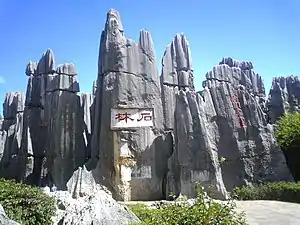 | |
| Location | China |
| Criteria | Natural: (vii), (viii) |
| Reference | 1248bis |
| Inscription | 2007 (31st Session) |
| Extensions | 2014 |
| Coordinates | 24°55′24″N 110°21′16″E |
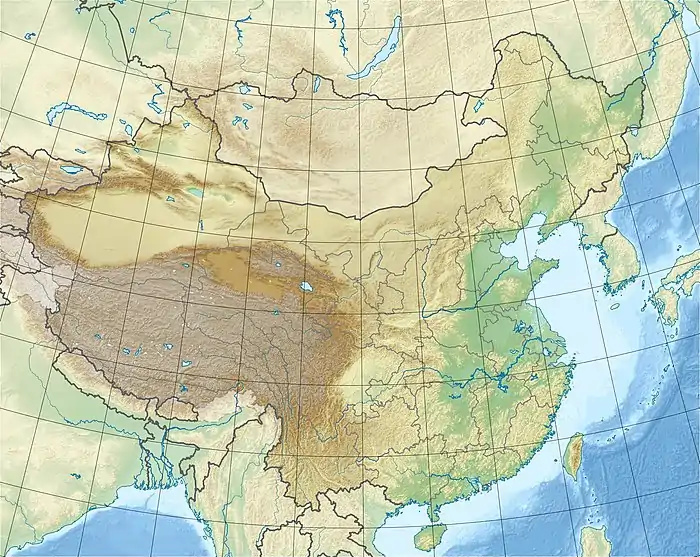 Location of South China Karst in China | |
South China Karst - UNESCO inscription details
| UNESCO Inscription No | Name |
|---|---|
| 1248-001 | Shilin Karst - Naigu Stone Forest (乃古石林) |
| 1248-002 | Shilin Karst – Suogeyi Village (所各邑村) Shilin Yi Autonomous County |
| 1248-003 | Libo Karst – Xiaoqijong (小七孔) Libo County |
| 1248-004 | Libo Karst – Dongduo (洞多) Libo County |
| 1248-005 | Wulong Karst – Qingkou Giant Doline (Tiankeng) (箐口天坑) |
| 1248-006 | Wulong Karst – Three Natural Bridges (天生三桥) Wulong County |
| 1248-007 | Wulong Karst – Furong Cave (芙蓉洞) Wulong County |
| 1248-008 | Guilin Karst – Putao Fenling |
| 1248-009 | Guilin Karst – Lijiang Fengcong
Yangshuo County |
| 1248-010 | Shibing Karst |
| 1248-011 | Jinfoshan Karst |
| 1248-012 | Huanjiang Karst |
Gallery
Wikimedia Commons has media related to
South China Karst.
South China Karst.
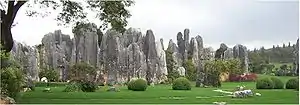 The Shilin (Stone Forest) South China Karst formations scenery
The Shilin (Stone Forest) South China Karst formations scenery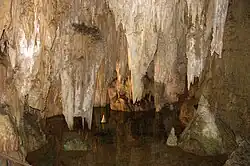 Karst limestone stalactites in the Furong Cave.
Karst limestone stalactites in the Furong Cave.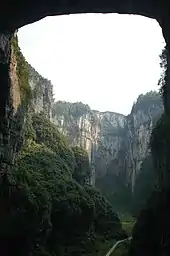 Tianlong Bridge, a South China Karst natural arch.
Tianlong Bridge, a South China Karst natural arch.
References
- "Twenty-two new sites inscribed on UNESCO's World Heritage List, and one deleted during Committee meeting in Christchurch". UNESCO World Heritage Convention. 29 June 2007. Retrieved 2011-02-14.
- "South China Karst". UNESCO.
External links
This article is issued from Wikipedia. The text is licensed under Creative Commons - Attribution - Sharealike. Additional terms may apply for the media files.
